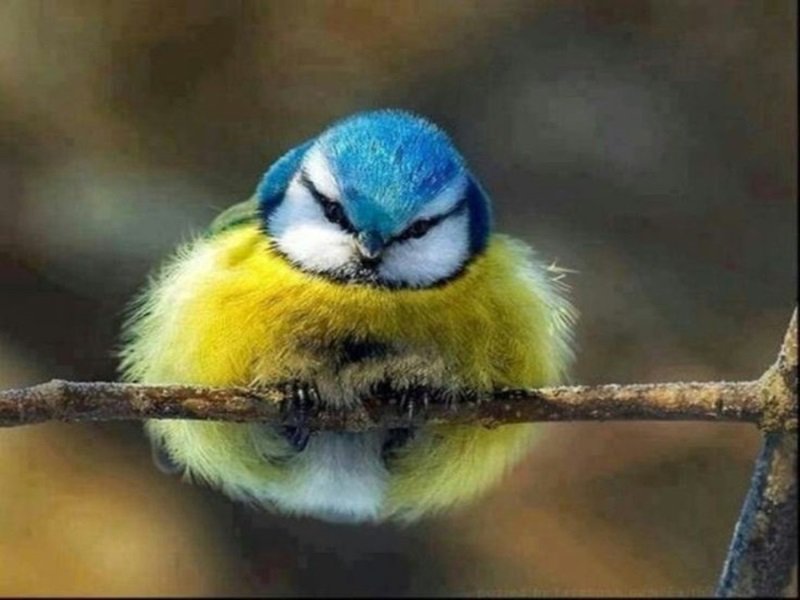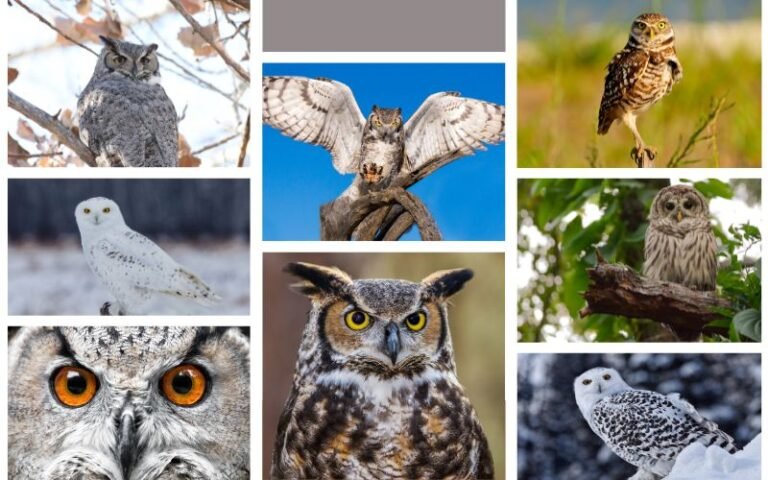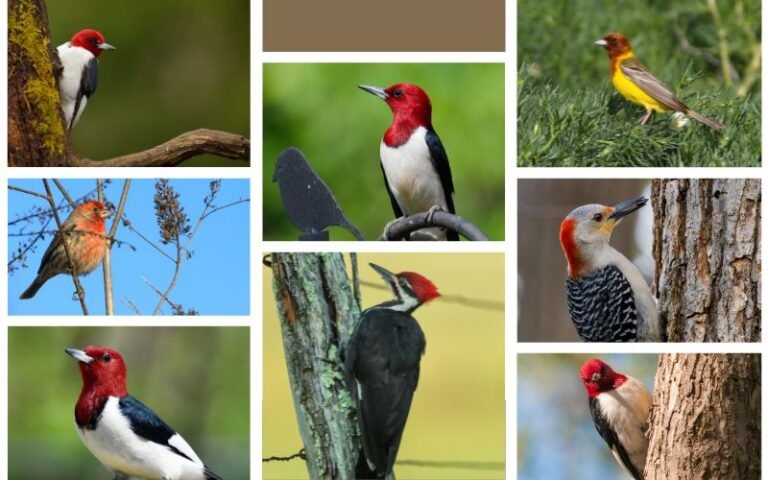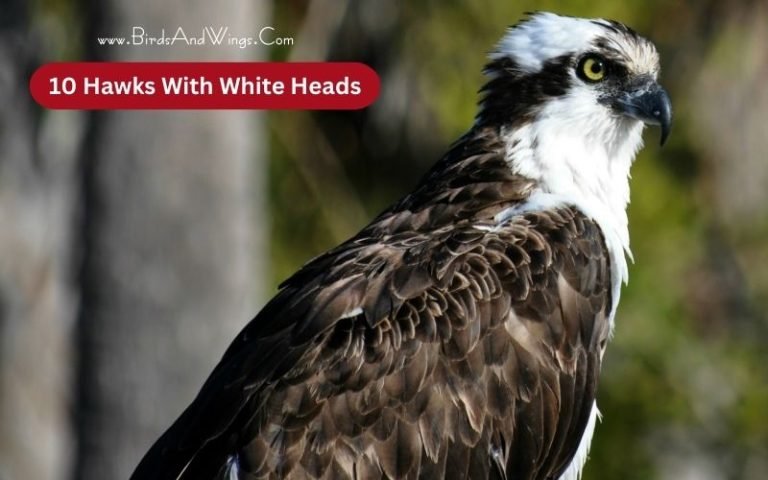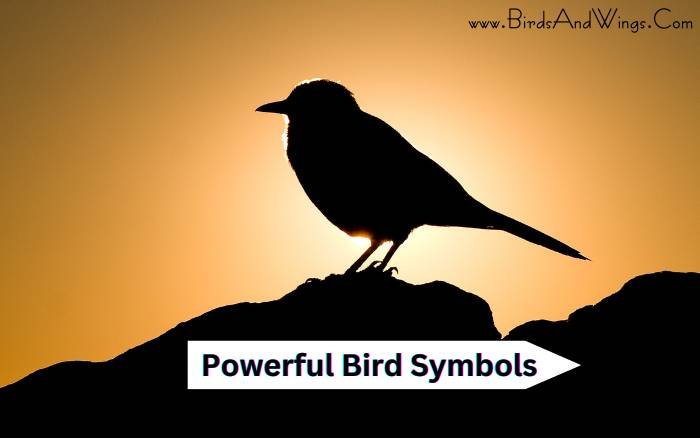Top 11 Birds With Fur
Birds are traditionally known for their feathered bodies, but their features tend to vary from species to species.
Some birds have plenty of features, some have generous to decent amounts of features, and some have little to no features on their bodies.
This article will discuss the top 11 birds with fur, which helps them survive in nature and different seasons throughout the year.
It will also demonstrate their characteristics, such as their scientific names, native place, size, lifespan, food diet, and other attributes of nature. So let’s delve into these fur worlds of birds.
Top 11 Birds with Fur
Features play a significant role as a protective barrier by providing them warmth, covering their skin from outer dirt, dust, and potential harm, and helping them have an effortless flight.
This section will provide the top 11 birds with fur, their scientific names, sizes, native places, lifespans, diet, and other facts about them.
Bird 1: Southern Brown Kiwi

- Scientific name: Apteryx australis
- Lifespan: between 25 to 50 years
- Native to: South Island, New Zealand
- Size: 45 to 55 cm
- Food or Diet: earthworms, beetles, larvae, snails, crayfish, spiders, centipedes, spiders, etc.
Southern brown kiwi refers to common kiwi that are mostly native to the South Island and New Zealand. These brown common kiwi can also be found in Fiordland, the Stewart Islands, and Westland.
They prefer tropical and subtropical forests, grasslands, shrublands, and dense forests. On Stewart Island, they can be seen on the sand dunes.
These birds have very long bills which are slightly curved downwards. Their feathers look like fur covering their body.
These furs keep their body warm in the cold season and maintain their body temperature. These brown kiwi birds are nocturnal, which means they become active during the night while sleeping during the day, just like owl birds.
Sometimes, they even sing with their pairs duets songs; males utter “kee-kee” sounds, and females respond “kurr kurr” to their sounds. Even male birds are more vocal than females and call for each other by stretching their legs and pointing their bills up.
They communicate by vocalization to defend their territory. They defend their territories by warning sounds or calls. Their territory area is mostly around 4.9 and 43 hectares.
Kiwis make their nests in burrows or thick vegetation. Females lay 1 to 2 eggs, and males incubate the eggs for 90 days.
Bird 2: Common Ostrich

- Scientific name: Struthio camelus
- Lifespan: 62 years in captivity; 30-40 in the wild
- Native to: Africa
- Size: 6ft 11 inch – 9 ft
- Food or Diet: plants, roots, leaves, insects, snakes, lizards and rodents
Common ostriches are large birds that can not fly. , they are the large flightless birds among avian species local to Africa, mostly on the south and north sides of Africa.
Their preferred habitats are open lands, savannas, and forest zones. They are also seen in semi-desert or true desert places in southwest Africa.
Besides, these ostriches are farmed in Australian countries, but many of them escaped from there. Still, they can be seen roaming in the Australian outback.
Their suitable temperature is around 40°C (70°F) between day and night. Sometimes, they cover their bare skin and legs with feathers or fur wings, which gives them heat to maintain their body temperature.
These ostriches spend their winter months mostly in pairs or alone. During their breeding seasons, they form a group of 5 to 100 birds and stay with them until the whole season.
Ostriches are diurnal birds, which means they might be seen active on moonlit nights. Their eyesight and hearing abilities are higher than those of other birds, which helps them sense their predators from far away.
If they see threats or threaten the environment, they run away from the place. However, their legs are so powerful that they can also cause injuries or death to humans or predators.
Bird 3: Southern Cassowary

- Scientific name: Casuarius casuarius
- Lifespan: 18 – 20 years in the wild; in captivity up to 40 years
- Native to: Indonesia, Papua New Guinea, Northern Australia
- Size: 6 ft 3 inch tall; 4 ft 2 in – 5ft 7 inch length
- Food or Diet: fruits, vertebrates, fungi, carrion, plants, etc.
Southern cassowaries are also known as Australian cassowaries or double-wattled cassowaries. They are flightless birds related to ostriches, emu, and kiwis.
Their body is covered with black plumage which looks like fur or hair. They have long, thick blue necks, blue faces, crests on their heads, and large, long feet as well.
These cassowary birds are considered the third heaviest birds on earth and also the largest bird on Asian continents with 85 kg (187 lb) weight.
These cassowary birds are found in Indonesia, Papua New Guinea, and Northeastern Australia. They prefer tropical rainforests, savanna forests, or mangroves as their habitats.
They mostly eat from the ground, such as fallen fruits, fungi, insects, and small vertebrates. They can even easily digest toxic, poisonous fruits that other animals cannot.
They breed with their pair during their breeding seasons, and male birds build nests on the ground. Male birds also incubate the egg and raise the young alone.
These birds are also known for their aggressive nature, which is harmful to other animals and humans. They can jump really high and kick with their powerful legs and claws.
Bird 4: Emu

- Scientific name: Dromaius novaehollandiae
- Lifespan: around 10 years in the wild; 20 years in captivity
- Native to: Australia
- Size: 150-190 cm
- Food or Diet: plants, wheat, larvae, beetles, cockroaches, spiders, ants,
Emu birds are also flightless birds whose bodies are covered with fur-like features. Their furs are gray-brown; necks are pale blue, and faces and beaks are black.
These birds are native to Australia, including savannas, woodlands, and sclerophyll forests. They can swim if the area is flooded or filled with water. Emu birds settle down at sunset and sleep at night.
Emu sleeps for 7 hours a day for 24 hours. They can maintain their body temperature on a very hot day because they have large, multi-folded nasal passages.
This helps them pass cool air through their body and decrease the excessive heat from their body. Their body can maintain around -5°C to 45°C. Their breeding seasons start in between December to January.
They remain with their partners during that time period. Male emu builds their nests on the ground surface level with sticks, barks, grasses, and leaves. Female emo gets more aggressive for the time of their courtship.
If a female emu finds the male already has a partner, it tries to chase and kick the competitor.
Bird 5: Hoatzin

- Scientific name: Opisthocomus hoazin
- Lifespan: 14 -15 years in the wild; 29-30 years in captivity
- Native to: South America
- Size: 26 inch
- Food or Diet: leaves, fruits, flowers
Hoatzin or hoactzin birds are large birds that are familiar in South America, especially in the Amazon’s tropical forests, swamps, riparian forests, and mangrove forests.
These Hoatzin birds have long necks and small heads, blue faces, and reddish-brown crests on their heads. They are very noisy birds who like to make distinctive calls and sounds, such as hisses, groans, grunts, etc., by flapping or spreading their wings.
If predators attack their nests, hoatzin birds fly away to divert their attention. In the meantime, chicks hide themselves, or if they get caught, they will jump into the river and later claw back to their nests for safety.
These birds generally breed in rainy seasons. They made small breeding colonies or communities at that time.
The female lays 2 or 3 eggs in it. Additionally, hunters hunted these birds for their passion, but later, researchers found their meat did not taste good. However, these species are losing their population because of habitat loss.
Bird 6: Flamingo

- Scientific name: Phoenicopteridae
- Lifespan: 30-40 years in the wild; 60 years in captivity
- Native to: America, Afro- Eurasia
- Size: 3.9- 4.7 feet
- Food or Diet: insects, larvae, mollusks, crustaceans
Flamingo birds are large birds with fur-like grayish-reddish features on their body. They are mostly distributed throughout the Americas along with the Caribbean and Eurasia.
These birds usually stand on one leg while tucking the other legs on the lower abdomen parts of their body.
However, researchers couldn’t find any proper reason behind this; some say these help them reduce and absorb the cold water with their body heat, while others say it’s because of their muscle activity.
They are also famous for making grunting, nasal honking, and growling sounds. Flamingos are very social and love to stay in colonies.
It helps them hide and camouflage themselves from predators and intruders. These species also form strong bonds with their mates, but sometimes, they change their bonds in the colonies because they have enough options to get more mates as well.
Bird 7: Secretary Bird

- Scientific name: Sagittarius serpentarius
- Lifespan: 10-15 years in the wild; 19-20 years in captivity
- Native to: Africa
- Size: 4 ft 3 in
- Food or Diet: insects, rodents, frogs, lizards, tortoises, larks, doves, small hornbills, etc
Secretary Birds are large birds, especially those in the birds of prey category, like eagles, hawks, and kites. Their feathers are mostly gray and black, and they have long black legs.
These birds are mostly found in Africa, the Western Cape, Senegal, and Somalia. They prefer sub-Saharan areas, savannas, and open grasslands for their habitats rather than dense forest or desert areas.
These species start breeding in the dry seasons. Both male and female birds perform courtship rituals or dance, sometimes on the ground, chasing each other by spreading their wings or in the sky, showing their amazing flight ability.
They establish their mating performance either on the ground or in the trees. Both male and female birds build their nests together on the top of the trees, at least 8 and 40 ft above the ground.
Sometimes, these Secretarybirds are attacked by eagles in pairs or singles; eagles sometimes steal their food. However, they sometimes knock down the eagles and pin them to the ground.
Bird 8: Gentoo Penguin

- Scientific name: Pygoscelis papua
- Lifespan: 15-20 years
- Native to: Sub-Antarctic islands
- Size: 70-90 cm
- Food or Diet: crustaceans, krill, shrimp, fish, etc.
Gentoo Penguins are also flightless birds with fur-like features. Their upper body is black, the front (breasts and belly) is white, and they have yellow beaks with white patches over their eyes.
These gentoo penguins are among the fastest swimmers, with 36 km/h (22mph), among other subspecies of penguins.
Their plumage helps them survive extremely cold and harsh climates by providing the necessary heat and keeping them warm. They choose ice-free surfaces for breeding their colonies and even prefer shallow coastal areas to build their nests.
Their preferred breeding places are the subantarctic islands, Falkland Islands, South Georgia and South Sandwich Islands, and Crozet Islands.
Although they live in colonies, they sometimes attack other penguins during their breeding seasons to protect their nesting stones. These stones symbolize their authority, and they also give them as prizes to their partners.
Bird 9: Oilbird

- Scientific name: Steatornis caripensis
- Lifespan: 12- 15 years
- Native to: South America
- Size: 40-49 cm
- Food or Diet: fruits, insects
Oilbirds are medium to large birds of the American continent. Their bodies are basically reddish brown with cinnamon and black color back.
Their wings are soft but not as soft as those of owls or nightjars. Their feet are small, although they don’t use them much—they are almost useless. These species are local to South America, including the Caribbean Islands of Trinidad, Colombia, Peru, Bolivia, Ecuador, and Brazil.
These species prefer forests where fruit trees are available, both places of caves and roosts during different seasons.
They are mainly seasonal migratory birds, which means they travel to a particular season of the year to search for fruit trees.
During the day, they rest in their nests or caves. Meanwhile, they become active and leave their nests to find fruits to eat.
However, their knee eyesight and specially adapted vision help them adapt through their echolocation skills.
These skills help them to identify and locate objects by echos. Nonbreeding birds roost in caves or rock shelters, and some other birds roost in a tree.
Bird 10: Bald Eagle

- Scientific name: Haliaeetus leucocephalus
- Lifespan: 20-30 years
- Native to: North America
- Size: 70-102 cm
- Food or Diet: fish, birds, mammals, rodent
Bald eagles are considered birds of prey who hunt their prey for food. They are familiar with most of North America, including Canada, the United States, and Northern Mexico.
They prefer river coasts, wetlands, rivers, lakes, marshes, and water places for their habitats. These species have white heads with bright yellow beaks and dark brown plumage over their body.
These bald eagles can carry their prey in their claws and reach 56-70 km/h speeds while flapping and gliding in the sky. They also use their hunting technique while swooping down the water and snatching the fish out of the water.
They can even carry their prey, whose weight sizes are the same as theirs. These bald eagles make their pair for their lifetime and repeat the nests yearly.
However, if one pair has failed to breed several times, they both will look for new mates. Their territory area generally covers 1 to 2 km ranges, which are both protected and defended. These bald eagles are the national bird of the United States.
Bird 11: Kakapo

- Scientific name: Strigops habroptila
- Lifespan: longer than 60 years
- Native to: New Zealand
- Size: 23-25 cm
- Food or Diet: plants, seeds, fruits, pollen, etc
Kakapo birds, also known as owl parrots, are native to New Zealand. Their upper parts are mostly moss greenish yellow, and their lower parts are yellowish green with yellow stripes.
They are mostly visible in Stewarts Islands, scrublands, coastal areas, and forests. These kakapo birds are also nocturnal, as they are active at night and search for food at night.
They sleep or remain on the ground or under the tree in the daytime. These kakapo birds can not fly, but they are amazing climbers with strong legs; they can easily climb tall trees and move from tree to tree with their strong legs.
Male kakapo birds make low-frequency booming sounds to attract or call their female partners. When female birds enter the territory, male birds perform courtship dance by gliding side to side and clicking the nose with their beaks.
These species are counted as endangered species as per 2023 reports with 248 individuals population.
Conclusion
In conclusion, all 11 birds have fur-like features over their bodies. These features help them keep warm and maintain their body temperature by releasing external heat as well.
Besides, these fur-like feathers also help them to adapt and adjust to nature. Similarly, like this characteristic, there are a lot of birds with different features such as speckled breasts, head crests, or blue eyes.
These features outshine their overall appearances and give them a presentable look among bird watchers.

